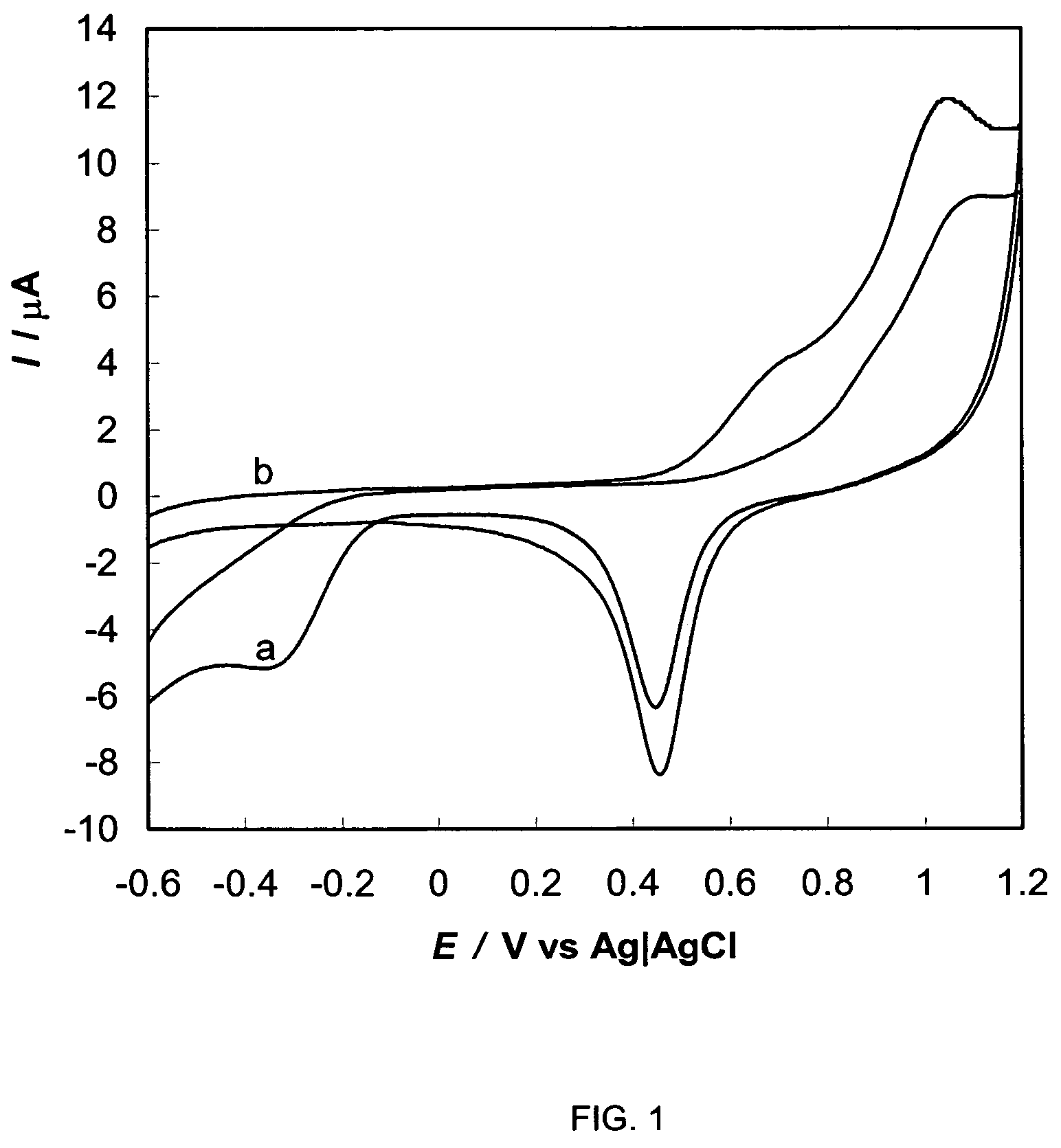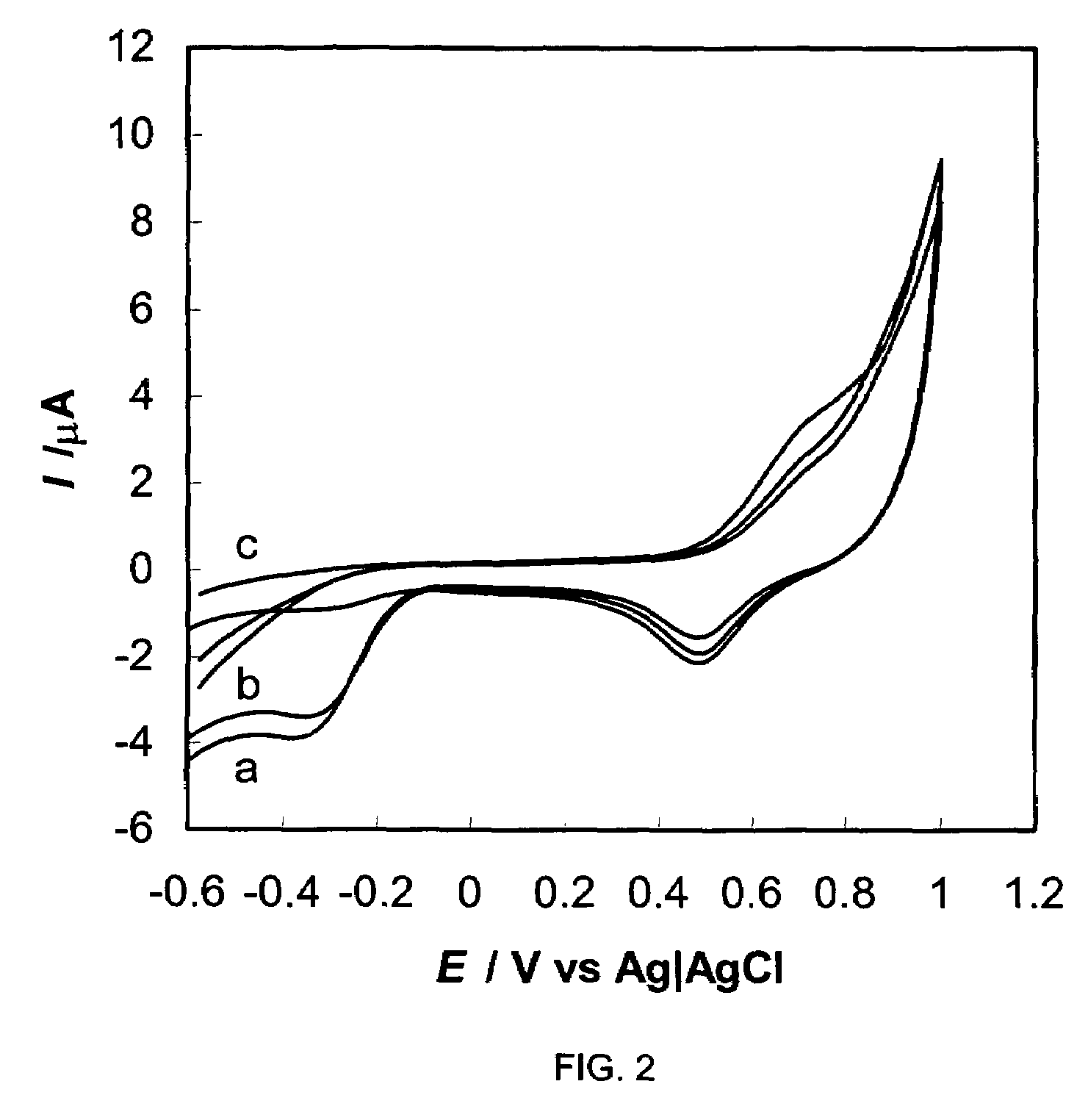Rapid and automated electrochemical method for detection of viable microbial pathogens
a technology of pathogen detection and electrochemical method, which is applied in the direction of liquid/fluent solid measurement, material electrochemical variables, instruments, etc., can solve the problem of sharp decline of curves
- Summary
- Abstract
- Description
- Claims
- Application Information
AI Technical Summary
Benefits of technology
Problems solved by technology
Method used
Image
Examples
example 1
[0040]Salmonella typhimurium (ATCC 14028) as a target pathogen was obtained from Dr Amy Waldroup (Centers of Excellence for Poultry Science, University of Arkansas). Escherichia coli O157:H7 (ATCC 43888) and Listeria monocytogenes (FDA 10143) as competing bacteria were obtained from American Type Culture Collection (Rockville, Md.). Fluid selenite cystine Broth, mannitol, trimethylamine oxide and disodium phosphate were purchased from Sigma-Aldrich (St. Louis, Mo.). Deionized water from Millipore (Milli-Q, 18.2 MΩ / cm) (Millipore, Bedford, Mass.). Buffered peptone water (BPW) was purchased from Remel (Lenexa, Kans.). Gold disk electrodes consisting of a 1.6 mm diameter disk embedded in the end of a 6 mm diameter Kel-F cylinder, platinum auxiliary electrodes, reference electrodes (Ag|AgCl) and polishing materials were from Bioanalytical Systems, Inc. (West Lafayette, Ind.).
example 2
[0041]A BAS CV-50W electrochemical analyzer and IM-6 impedance analyzer (Bioanalytical Systems, Inc., West Lafayette, Ind.) were equipped with a water-jacketed glass vial (15 ml) as an incubator containing three electrodes (Au working electrode, platinum auxiliary electrode and an (Ag|AgCl) reference electrode). The temperature in the incubator was controlled at 37±0.5° C. by a thermostatic bath.
example 3
and Conventional Plating Method
[0042]A pure culture of S. typhimurium was grown in 5 ml BPW broth at 37° C. for approximately 17˜18 h before use. The culture was serially diluted from 1 to 10−8 with selenite cystine / mannitol medium (SC / M). SC / M medium was prepared by adding 17 g fluid selenite cystine and 5 g mannitol into 1 L deionized water. SC / M medium was sterilized by boiling. The prepared medium was stored at 2–8° C. Plate counting was performed by plating 0.1 ml of dilutions on xylose lysine tergitol agar (XLT4) (Difco, Detroit, Mich.). After incubation at 37° C. for 24 h, S. typhimurium colonies on the plate were counted to determine the number of colony forming units of S. typhimurium per ml (CFU / ml) in the culture. A pure culture of E. coli or L. monocytogenes was grown in 5 ml brain heart infusion (BHI) at 37° C. for approximately 17˜18 h before use. The number of E. coli or L. monocytogenes in pure culture was determined by plate counting methods. Colonies of L. monocyto...
PUM
| Property | Measurement | Unit |
|---|---|---|
| time | aaaaa | aaaaa |
| time | aaaaa | aaaaa |
| diameter | aaaaa | aaaaa |
Abstract
Description
Claims
Application Information
 Login to View More
Login to View More - R&D Engineer
- R&D Manager
- IP Professional
- Industry Leading Data Capabilities
- Powerful AI technology
- Patent DNA Extraction
Browse by: Latest US Patents, China's latest patents, Technical Efficacy Thesaurus, Application Domain, Technology Topic, Popular Technical Reports.
© 2024 PatSnap. All rights reserved.Legal|Privacy policy|Modern Slavery Act Transparency Statement|Sitemap|About US| Contact US: help@patsnap.com










